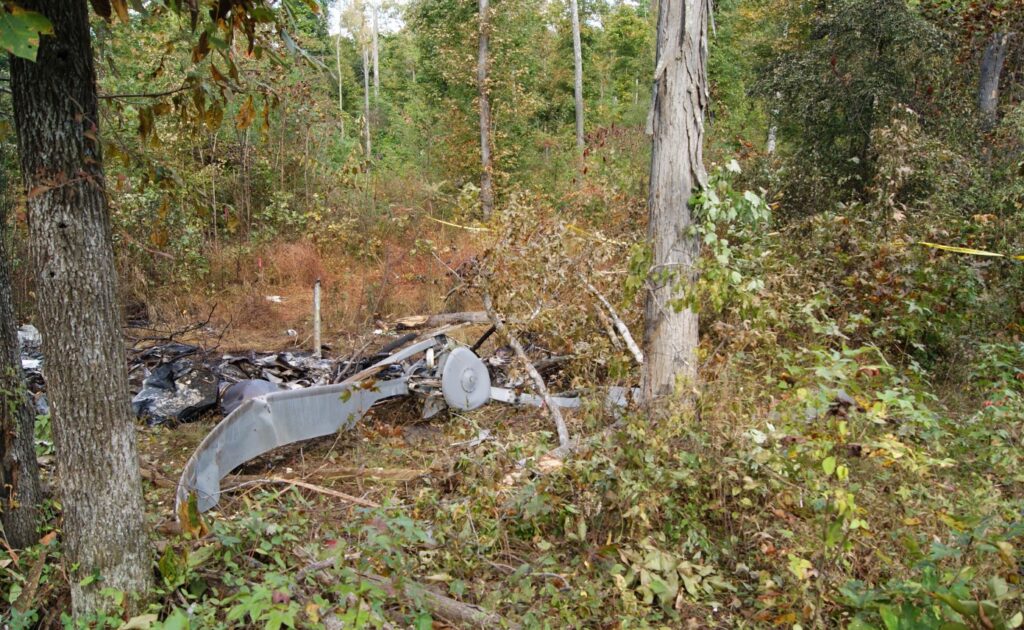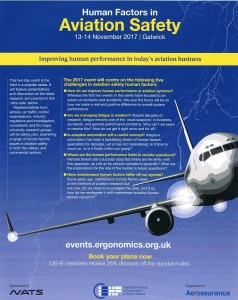HTAWS Technology: Friend or Foe?
Technology has great potential to reduce aviation risk. The European Helicopter Safety Team (EHEST) issued a study in October 2014 on the safety value of technology.
Terrain Avoidance and Warning Systems (TAWS) have proved highly effective at fixed wing Approach and Landing Accident Reduction (ALAR).
On 20 February 2014, the Federal Aviation Administration (FAA) issued an extensive package of changes to Parts 91, 120 and 135 to improve Helicopter Emergency Medical Service (HEMS) safety that includes a requirement for Helicopter TAWS (HTAWS). While the adoption of HTAWS offers great potential safety benefit, its introduction, like any new technology, needs to be carefully considered.
It may be tempting to simply see the introduction of such equipment as an incremental improvement in safety and simply base introductory training, for example, on the avionic manufactures’ technical publications for the equipment. However, there are wider potential impacts that need to be addressed when risk assessing the unintended consequences of introducing new technology. For example reducing the risk of one accident type may heighten the risk of another unless additional mitigations are in place.
One example of this phenomena has been the introduction of flight deck automation, the subject of a July 2014 the Royal Aeronautical Society Rotorcraft Group conference, Technology: Friend or Foe? which we discussed in a previous article. A US HEMS accident in 2013 highlights an unintended consequence of HTAWS introduction.
The Hospital Wing Accident
On 22 October 2013, Airbus Helicopters AS350B3e (H125) helicopter N353HW, operated by the Memphis Medical Center Air Ambulance Service (doing business as Hospital Wing) was 18 minutes into positioning flight to collect a patient for an inter-hospital transfer, when it crashed near Somerville, Tennessee at 06:05 local time. There was a post crash fire (a subject Aerossurance has discussed recently). All three persons on board died.

Wreckage of Hospital Wing AS350B3e N353HW (Credit: NTSB)
Two calls had been turned down during the night due to poor weather. At an airport about 2 miles from the accident site, a few clouds were observed at 800 feet agl, and a broken ceiling existed at 1,200 feet agl. As well as Garmin GNS530W TAWS the helicopter was equipped with Night Vision Goggles (NVGs) but was not equipped for operation under Instrument Flight Rules (IFR).
In there final report the US National Transportation Safety Board (NTSB) state:
…the helicopter was observed in a climb and in a right turn away from the observed course. The last data point indicated that the helicopter was on a course of 146 degrees and at 98 knots ground speed and at an altitude of 1,560 feet above mean sea level (msl) or about 1,116 feet above ground level (agl). A review of the helicopter’s ground track revealed two obstacles in the immediate vicinity, an unlit, nonoperational cellular tower, 140-feet tall, and a water tower, about 115-feet tall. Although recorded HTAWS data was not available, research and flight testing revealed that the pilot may have received an in-flight obstacle alert, prompting a climb. Considering the low clouds and night conditions that probably existed along the last segment of the flight’s track, it is likely that the pilot initiated a climb and inadvertently entered instrument meteorological conditions, where a loss of helicopter control occurred.

Wreckage of Hospital Wing AS350B3e N353HW (Credit: NTSB)
The pilot’s inadvertent encounter with night, instrument meteorological conditions while responding to an obstacle alert, resulting in an in-flight loss of helicopter control.
The pilot was described by colleagues as “good pilot”, “well-liked” and “conscientious”. He flew “by the book,” did not “press” the weather and used the operators risk assessment tools. The operator did commendably include inadvertent entry to IMC simulator training. It is not however clear if the operator had recognised that while TAWS and NVG (for example) would reduce the risk on many flights, they would allow more marginal high risk flights to be attempted.
A Prior Hospital Wing Accident
The same operator had a prior accident in 2010. AS350B3 N855HW crashed in bad weather killing the three persons on board on a return positioning flight. There was a post crash fire. That aircraft was also equipped with TAWS (a Honeywell EGPWS) although the NTSB were not able to examine its performance as it was destroyed in the fire.
That aircraft was fitted with an Avidyne FlightMax EX500 multifunction moving map display that could be configured to depict weather information. The unit could receive satellite broadcast XM WX Satellite Weather information, including Next Generation Radar (NEXRAD) Doppler weather radar and lighting strike data. Its not clear how the pilot used that capability, if at all. However the NTSB did note that fatigue was likely to have affected the pilot’s decision making.
Safety Resources
The European Safety Promotion Network Rotorcraft (ESPN-R) has a helicopter safety discussion group on LinkedIn. We have previously written a number of articles on US HEMS safety including:
- Life Flight 6 – US HEMS Post Accident Review
- More US Night HEMS Accidents
- US HEMS “Delays & Oversight Challenges” – IG Report
- Crashworthiness and a Fiery Frisco US HEMS Accident
Also:
Multiple TAWS Warnings Reveal Safety Reporting Issue
Extreme Latitudes – Extra CFIT Risk
UPDATE 18 October 2016: CFIT Gangnam Style – Korean S-76C++ : a HTAWS equipped helicopter collides with a 39 storey building that is not recorded in the database.
UPDATE 13 April 2017: The Irish Air Accident Investigation Unit (AAIU) has issued its preliminary report into the loss of Sikorsky S-92A EI-ICR operated by CHC, for the Irish Coast Guard as Rescue 116 at Black Rock off the coast of County Mayo on 14 March 2017. The SAR helicopter impacted the 300ft high Black Rock island, close to a lighthouse, on a night approach to a refuelling site on the mainland. The helicopter was fitted with a Honeywell MK XXII Enhanced Ground Proximity Warning System (EGPWS) with modified software for SAR profiles. However, the AAIU reveal that:
…the EGPWS manufacturer informed the Investigation that “The lighthouse obstacle is not in the obstacle database and the terrain of the island is not in our terrain database.”
The Investigation is continuing to engage with Honeywell and other parties/agencies to reach a full understanding of this issue.
UPDATE 8 May 2017: Flight International reports that EASA “is scrutinising the broader use” of HTAWS:
“The agency [EASA] is looking into this subject to identify needs for corrective actions or room for improvements, notwithstanding that, according to the flight manual of S-92, ‘navigation must not be predicated upon the use of [EGPWS] information’,” it says.
It adds that in order to be included in a terrain database, obstacles must have a minimum height of 30m.
An added difficultly is that helicopter-specific terrain-warning systems have been adapted from technology originally designed for operation by fixed-wing aircraft, whose requirements – and operational minima – are markedly different.
UPDATE 14 July 2017: In relation to the 14 March 2017 Sikorsky S-92A EI-ICR accident: Rescue 116 crash: Pilots’ group raised concerns over IAA and Absence of Blackrock Island on warning system raised four years before R116 crash
UPDATE 20 April 2021: After Offshore HTAWS Minimum Operational Performance Standards (MOPS) were published the EUROCAE Working Group 110/RTCA Special Committee 237 has moved onto defining MOPS for onshore HTAWS. This work follows UK CAA CAP1747: Class A HTAWS Warning Annunciation.
UPDATE 5 April 2023: FAA notice returns attention to TAWS nuisance alerts
The NTSB issued Safety Recommendation A-18-014 on 26 2018. NTSB recommended that the FAA “work with” Part 135 operators to raise awareness and develop plans and procedures relating to mitigate risks identified from a 2016 Alaska C208 accident. This would appear to be encouraging a collaborative effort on safety improvement. Its deeply unimpressive that the FAA have taken 4 years 11 months to simply issue their own recommendation in InFO 23003 that operators review their own training and procedures. The FAA mention that “in some situations, aircraft impacted terrain that might have been avoided had the TAWS alert feature been Uninhibited”. One wonders how many may fatal accidents occurred since they received that NTSB Safety Recommendation.
The Tender Trap: SAR and Medevac Contract Design Aerossurance’s Andy Evans discusses how to set up clear and robust contracts for effective contracted HEMS operations.
Aerossurance is pleased to sponsor the 2017 European Society of Air Safety Investigators (ESASI) 8th Regional Seminar in Ljubljana, Slovenia on 19 and 20 April 2017. ESASI is the European chapter of the International Society of Air Safety Investigators (ISASI).
Aerossurance is pleased to be supporting the annual Chartered Institute of Ergonomics & Human Factors’ (CIEHF) Human Factors in Aviation Safety Conference for the third year running. We will be presenting for the second year running too. This year the conference takes place 13 to 14 November 2017 at the Hilton London Gatwick Airport, UK with the theme: How do we improve human performance in today’s aviation business?



Recent Comments